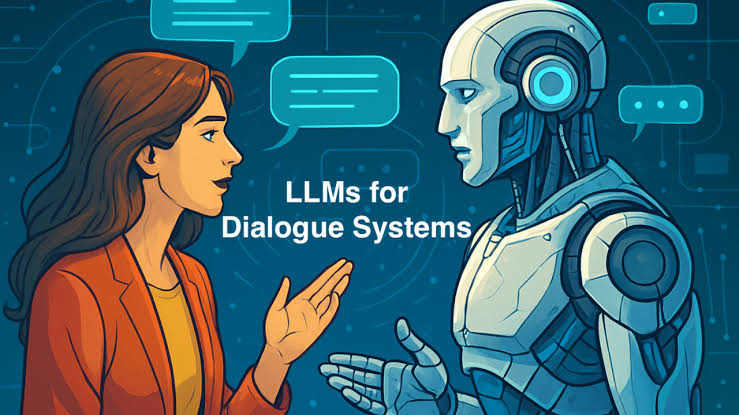Dialogue systems are not just tools—they are becoming companions in the digital age, reshaping how we think, work, and live.
In recent years, dialogue systems have become an essential part of modern digital communication, shaping the way humans interact with machines. These systems, which include chatbots, virtual assistants, and voice-activated AI, serve as bridges between natural human language and machine responses. They have evolved from basic scripted interfaces to complex, context-aware conversational agents capable of understanding, processing, and generating human-like dialogue. As of 2025, their use spans customer service, healthcare, education, entertainment, and personal productivity tools.
A dialogue system is fundamentally a computer program designed to converse with a human user. These systems may be text-based, voice-based, or multimodal, depending on the interface. Early examples were simple, with rule-based patterns and pre-written scripts. However, the growth of artificial intelligence and natural language processing (NLP) technologies has pushed these systems into more sophisticated territory. Now, systems can adapt to different speakers, remember previous interactions, and even infer emotional states or user intent.
The architecture of a dialogue system is typically composed of several modules working together. The first module is the input processor, responsible for converting human input into a format the machine can interpret. In voice systems, this includes automatic speech recognition (ASR), while text-based systems receive direct written input. This information is then passed on to the natural language understanding (NLU) unit, which identifies the user's intent and extracts relevant entities.
Once the system understands the user’s input, it proceeds to the dialogue manager. This component is the system's brain, determining how to respond based on context, predefined logic, or learned behaviors. Dialogue managers may use hand-crafted rules, statistical models, or machine learning algorithms to make decisions. Some advanced systems utilize reinforcement learning, allowing them to adapt over time by learning from interactions.
Next comes the natural language generation (NLG) module, responsible for turning machine decisions into human-readable or spoken responses. The output is then delivered through a text display or text-to-speech (TTS) engine in voice systems. Behind the scenes, dialogue systems often rely on a knowledge base, which may include structured data, FAQs, documents, or live information sources, to provide accurate and relevant answers.
Building effective dialogue systems poses several challenges. One of the primary difficulties lies in ambiguity. Human language is inherently complex, filled with slang, idioms, typos, and non-literal phrases. For a machine to interpret this accurately, it requires not only linguistic knowledge but also contextual awareness. Additionally, maintaining dialogue coherence—ensuring that responses make sense across multiple turns in a conversation—is a persistent technical hurdle.
Another challenge is personalization. Users expect systems to remember preferences, adapt to their tone, and provide consistent experiences. Achieving this requires effective user modeling, data privacy safeguards, and efficient memory mechanisms. In 2025, many leading systems integrate deep learning models such as transformers and large language models to capture these nuances, allowing more flexible and human-like interactions.
Ethical considerations are also a significant part of dialogue system design. Developers must ensure that systems avoid biased language, misinformation, or offensive content. Since many dialogue systems are trained on large internet datasets, filtering and monitoring outputs are crucial to prevent harmful consequences. Additionally, privacy concerns arise when systems store user data or conduct sentiment analysis. Transparency, consent, and secure data practices are essential.
The application of dialogue systems in industry is wide-ranging. In customer service, chatbots handle queries, provide information, and troubleshoot problems 24/7. In healthcare, conversational agents assist with symptom checking, appointment scheduling, and mental health support. In education, dialogue-based tutoring systems help learners understand complex topics by simulating one-on-one interaction. Smart home devices like Alexa and Google Assistant represent some of the most popular voice-based systems in daily life.
As technology progresses, multimodal dialogue systems are gaining popularity. These systems combine voice, text, facial expressions, and gestures to create more immersive user experiences. For example, a virtual assistant on a smartphone might respond to voice commands while displaying visual information and adjusting its tone based on facial recognition. This integration of multiple inputs and outputs makes conversations more natural and effective.
In future development, researchers are focusing on emotion-aware systems that can detect and respond appropriately to users’ emotional states. By integrating affective computing and sentiment analysis, dialogue systems will become more empathetic and responsive. Another area of innovation is multilingual and code-switching support, enabling systems to handle diverse linguistic patterns, especially in multicultural environments.
Furthermore, open-domain conversational agents, like advanced chatbots built on large-scale language models, are being refined to maintain longer and more meaningful conversations. While current systems often perform well in narrow domains, general conversation remains a complex goal. However, advances in generative AI are bringing that future closer, allowing machines to engage in broader discussions, storytelling, and creative interactions.
In conclusion, dialogue systems have evolved from static, rule-based programs into intelligent, adaptive interfaces that redefine how humans communicate with machines. Their growing role in various industries highlights their transformative potential. As development continues, the focus will increasingly shift towards more natural interaction, ethical responsibility, emotional intelligence, and personalized experiences.
